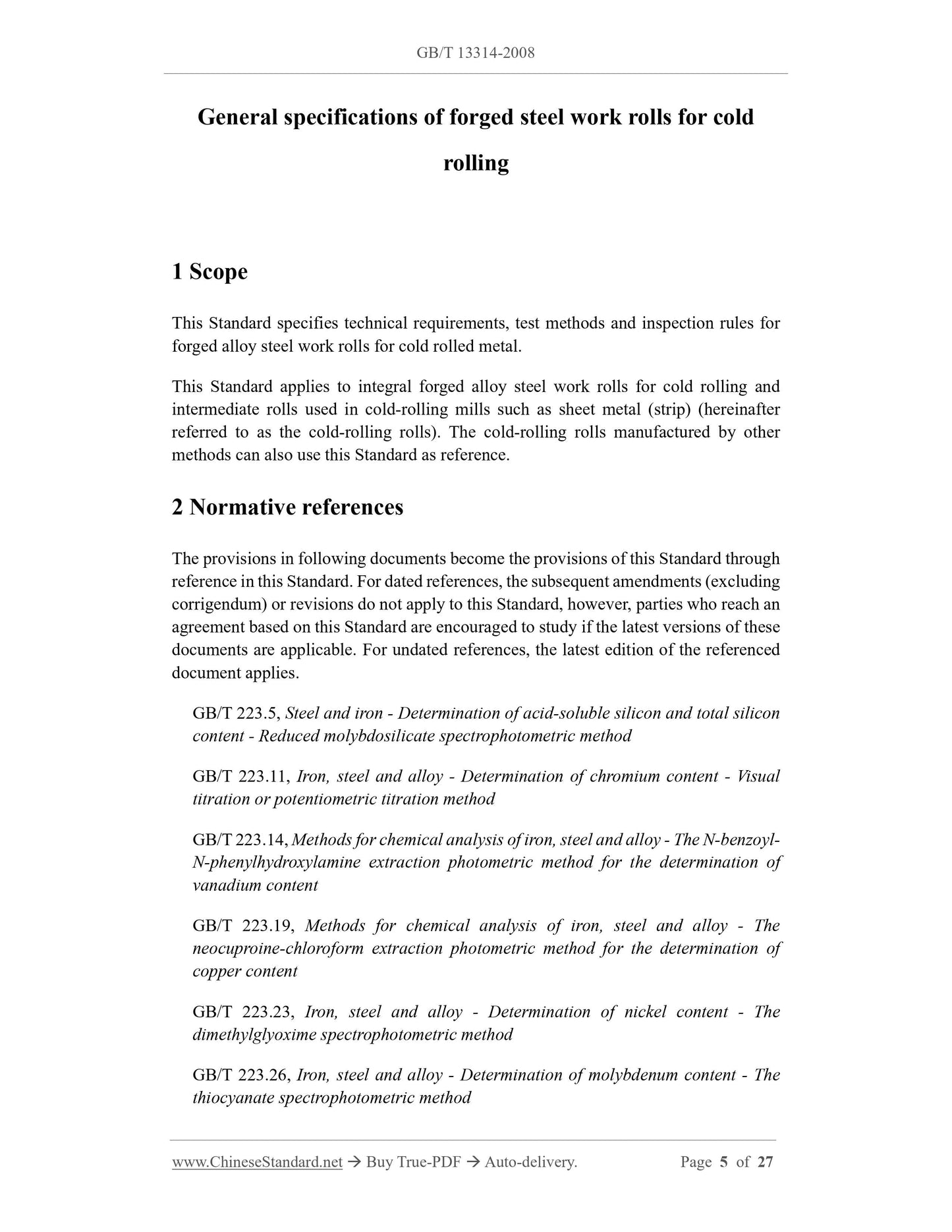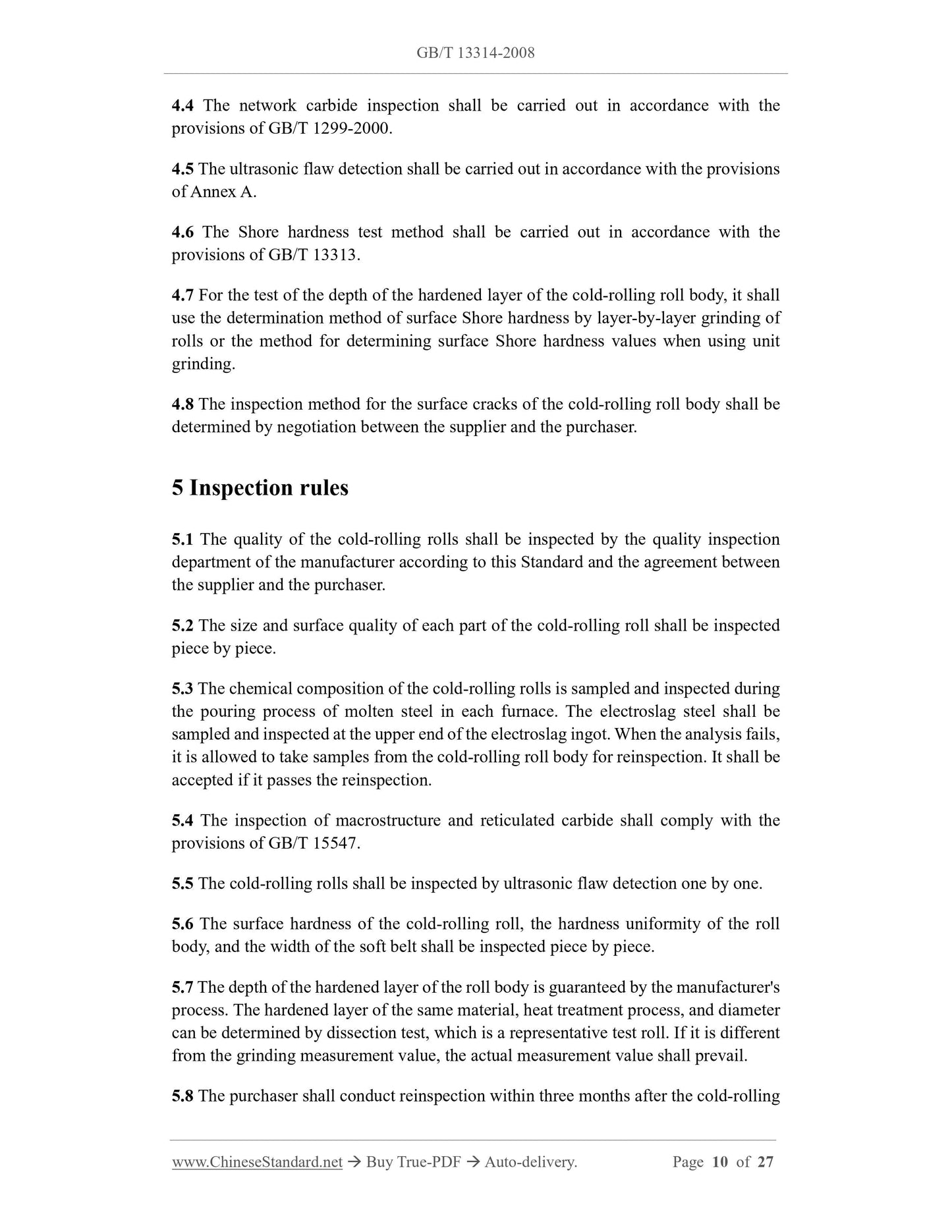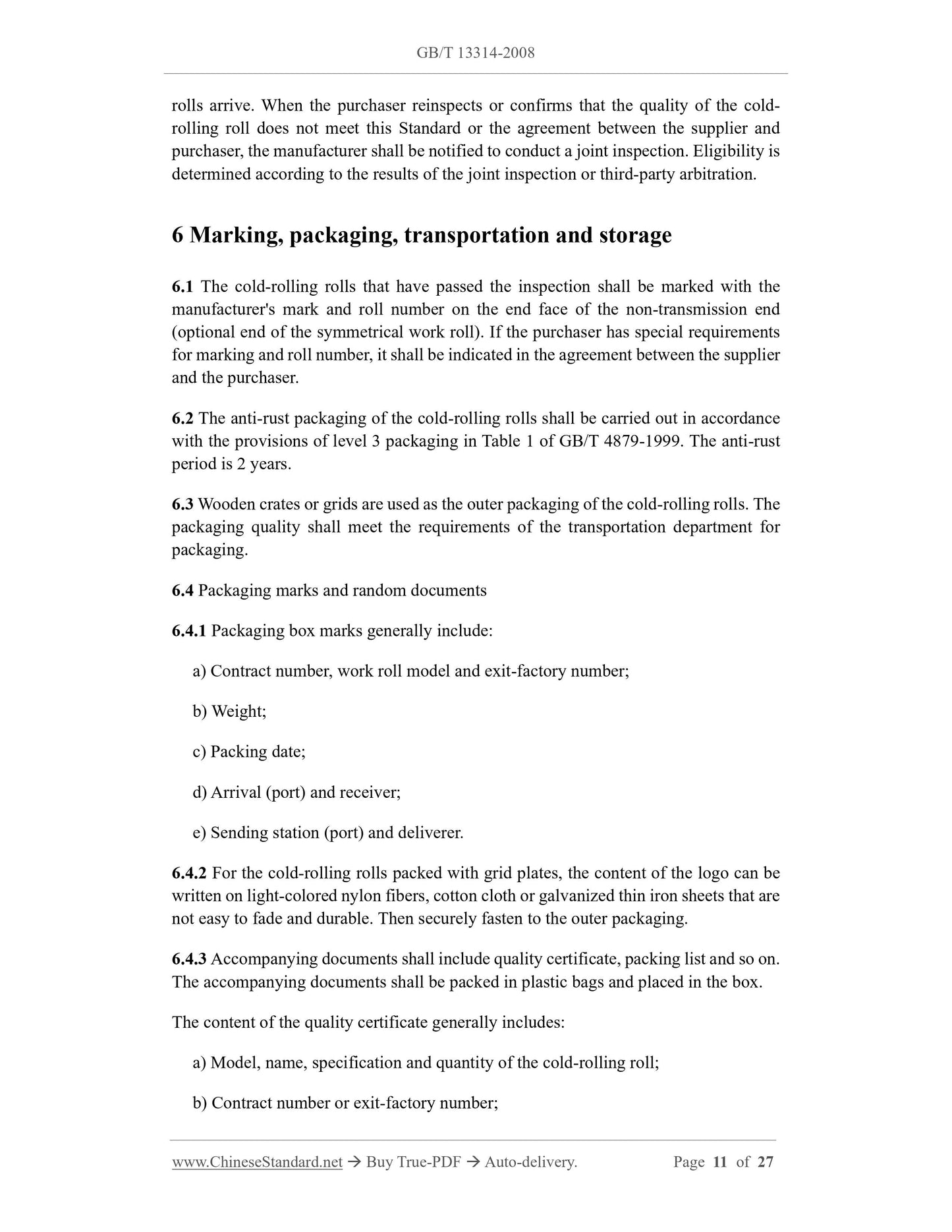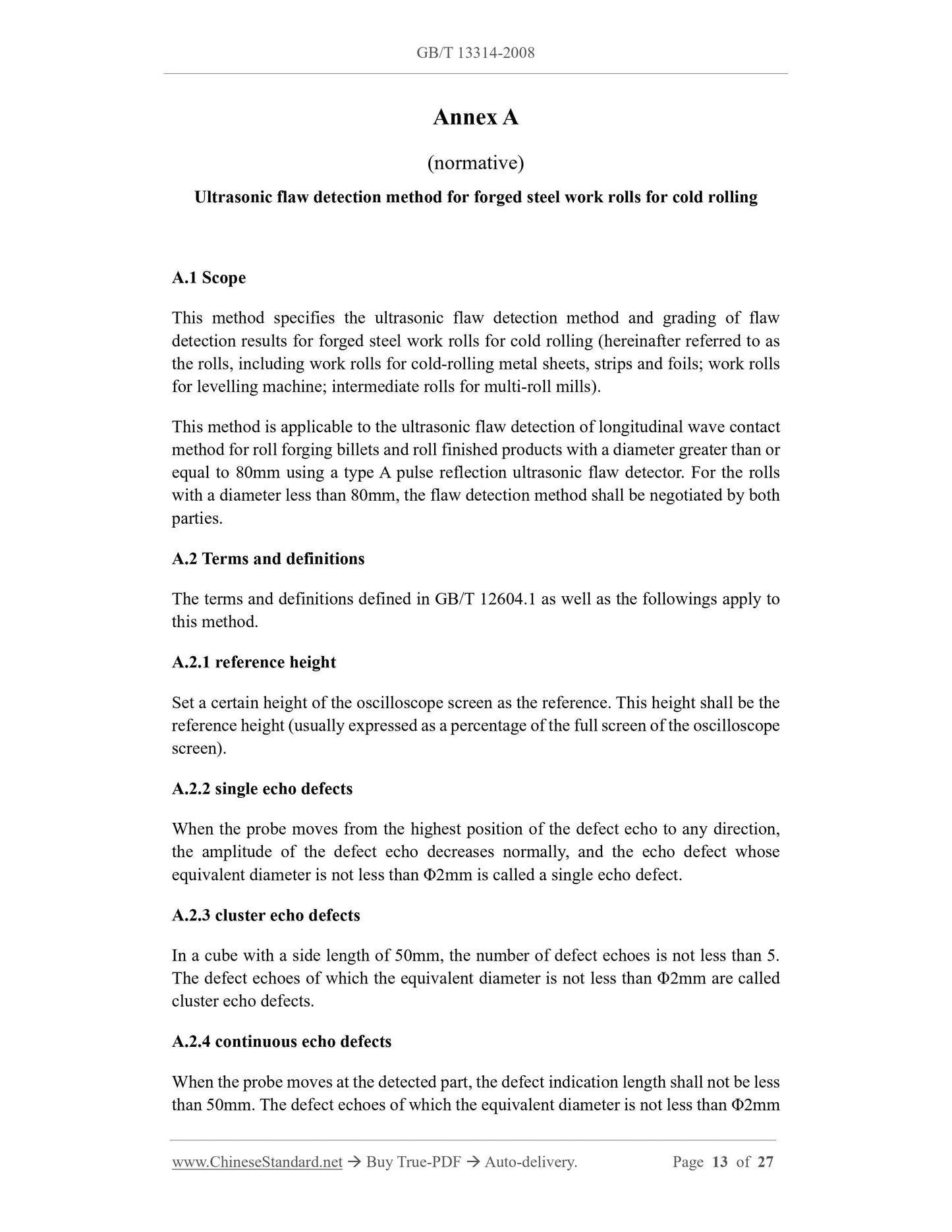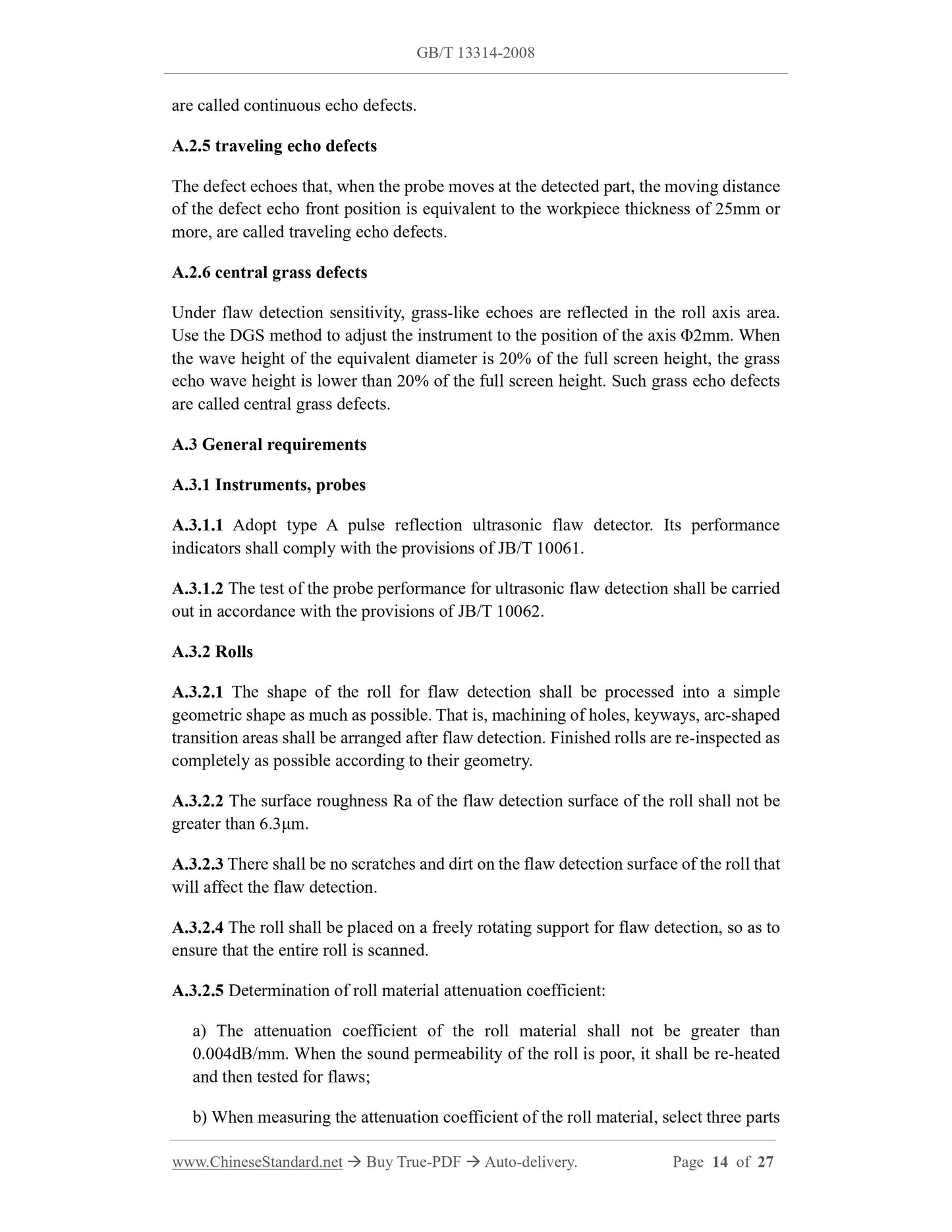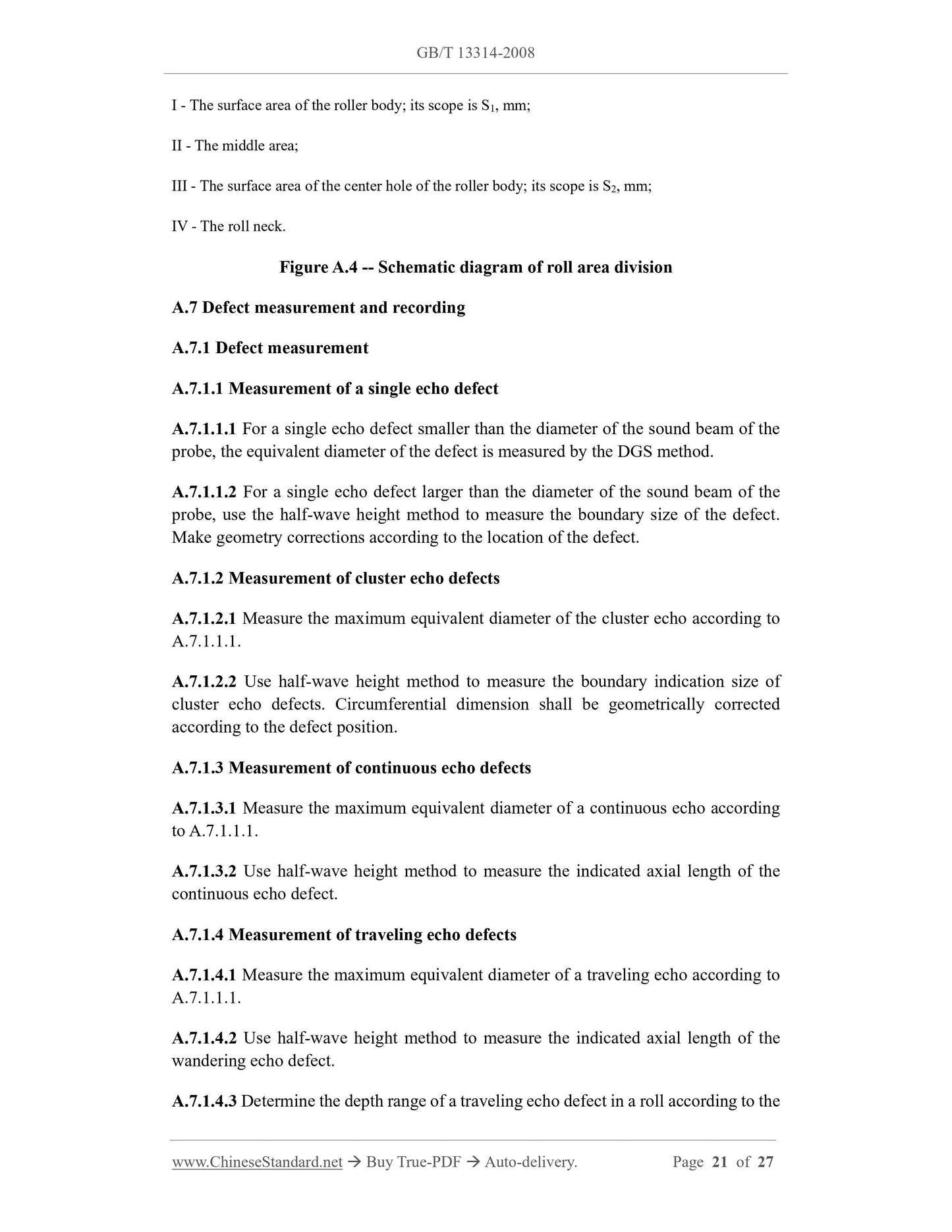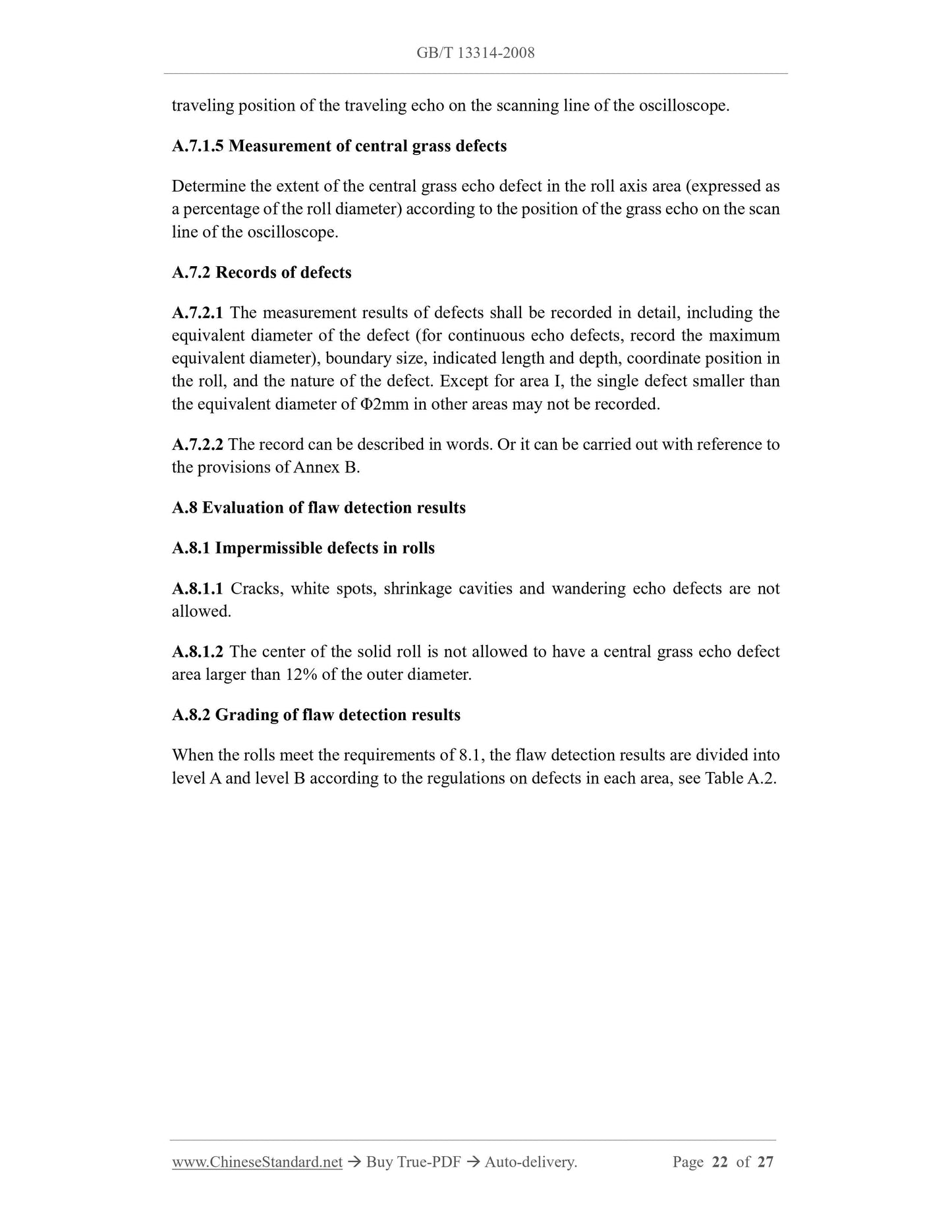1
/
of
9
www.ChineseStandard.us -- Field Test Asia Pte. Ltd.
GB/T 13314-2008 English PDF (GB/T13314-2008)
GB/T 13314-2008 English PDF (GB/T13314-2008)
Regular price
$250.00
Regular price
Sale price
$250.00
Unit price
/
per
Shipping calculated at checkout.
Couldn't load pickup availability
GB/T 13314-2008: General specifications of forged steel work rolls for cold rolling
Delivery: 9 seconds. Download (and Email) true-PDF + Invoice.Get Quotation: Click GB/T 13314-2008 (Self-service in 1-minute)
Newer / historical versions: GB/T 13314-2008
Preview True-PDF
Scope
This Standard specifies technical requirements, test methods and inspection rules forforged alloy steel work rolls for cold rolled metal.
This Standard applies to integral forged alloy steel work rolls for cold rolling and
intermediate rolls used in cold-rolling mills such as sheet metal (strip) (hereinafter
referred to as the cold-rolling rolls). The cold-rolling rolls manufactured by other
methods can also use this Standard as reference.
Basic Data
| Standard ID | GB/T 13314-2008 (GB/T13314-2008) |
| Description (Translated English) | General specifications of forged steel work rolls for cold rolling |
| Sector / Industry | National Standard (Recommended) |
| Classification of Chinese Standard | H94 |
| Classification of International Standard | 77.180 |
| Word Count Estimation | 17,153 |
| Date of Issue | 2008-05-13 |
| Date of Implementation | 2008-11-01 |
| Older Standard (superseded by this standard) | GB/T 13314-1991; GB/T 13315-1991 |
| Quoted Standard | GB/T 223.5; GB/T 223.11; GB/T 223.14; GB/T 223.19; GB/T 223.23; GB/T 223.26; GB/T 223.59; GB/T 223.60; GB/T 223.63; GB/T 223.68; GB/T 223.69; GB/T 226; GB/T 1184-1996; GB/T 1299-2000; GB/T 1804-2000; GB/T 4879-1999; GB/T 9445; GB/T 12604.1; GB/T 13313; GB/T 15546; GB/T 15547; JB/T 10061; JB/T 10062 |
| Regulation (derived from) | National Standard Approval Announcement 2008 No.8 (Total No.121) |
| Issuing agency(ies) | General Administration of Quality Supervision, Inspection and Quarantine of the People's Republic of China, Standardization Administration of the People's Republic of China |
| Summary | This standard specifies the use of cold-rolled metal alloy forged work rolls technical requirements, test methods and inspection rules. This standard applies to the whole forged alloy steel sheet metal and other cold work roll and intermediate roll cold rolling mill used. Other methods can also be made ??with reference to the implementation of cold roll. |
Share


